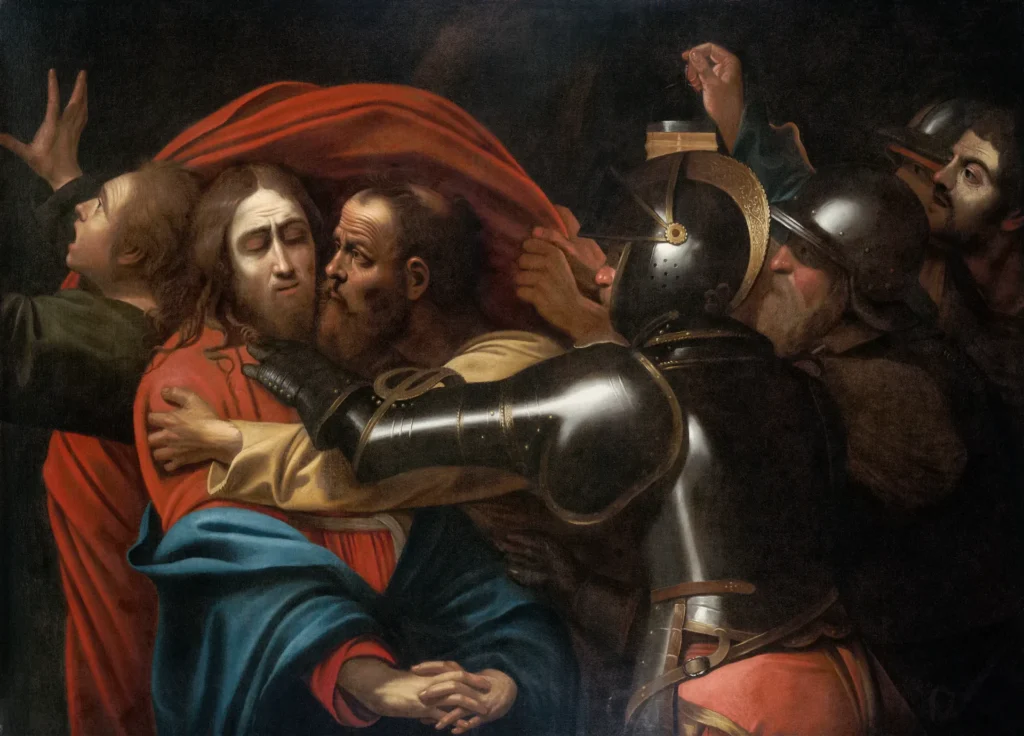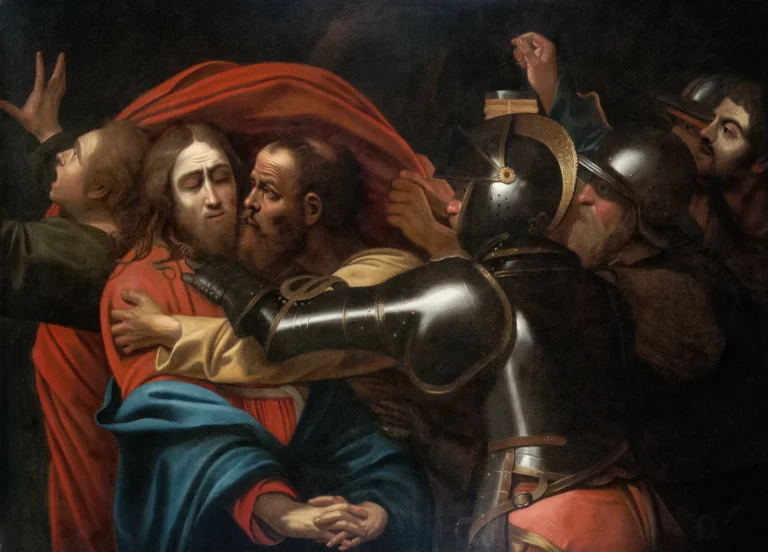The Taking of Christ (early to mid-17th century)
Created around 1602, The Taking of Christ is one of Caravaggio's most powerful paintings showcasing the moment of Jesus's arrest in the Garden of Gethsemane. This seminal work displays the unique chiaroscuro technique, emphasizing the emotional tension and vulnerability of Christ against the cold engagement of Judas Iscariot and the Roman soldiers. Its dramatic lighting and composition invite the viewer to witness an intimate and intense moment in the biblical narrative.
Year 1602
About the Artwork
The story behind The Taking of Christ begins with its commission by the Roman nobleman Ciriaco Mattei. For 200 years, it resided in Rome, only to be misattributed to Gerrit van Honthorst, a follower of Caravaggio, after being sold. It wasn't until the 20th century that the painting was rediscovered and authenticated as a true work of Caravaggio. The artwork not only narrates the biblical betrayal but encapsulates the emotional depth, showcasing Judas's treachery through a kiss, with Christ portrayed as the serene acceptance of his fate. The scene intensifies with the inclusion of the self-portrait of Caravaggio as the man holding the lantern, merging artist and subject.
Did You Know
After being lost for two centuries, The Taking of Christ was rediscovered in 1990 in a private collection, mistakenly attributed to a different artist until its authenticity was confirmed by experts.
In an intriguing twist, the man holding the lantern is believed to be a self-portrait of Caravaggio, possibly suggesting his role in witnessing the events he painted, drawing viewers into the scene more intimately.
Caravaggio’s innovative use of chiaroscuro not only highlights the drama in The Taking of Christ but also influenced countless artists who followed, marking a significant evolution in baroque art’s approach to light and shadow.










